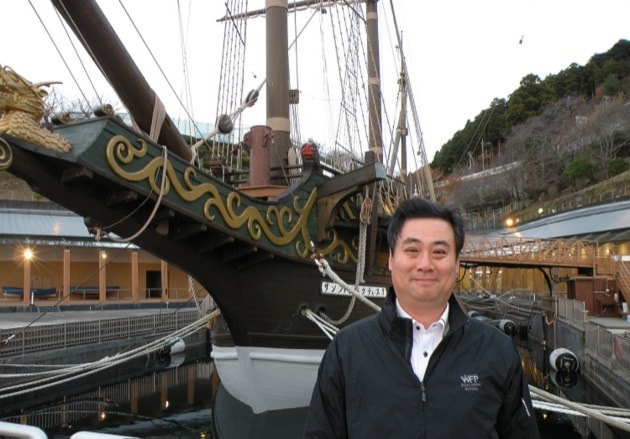One of a series of articles on the future of the B.C. forest industry. For more #BCForestFuture stories see index below or search for the hashtag on Facebook or Twitter.
MIYAGI, JAPAN – When the Great East Japan Earthquake and tsunami devastated coastal areas around Fukushima in 2011, one area struck was the San Juan Bautista Museum, breaking the masts of a reconstructed Spanish sailing ship from the 17th Century.
A symbol of Japan's earliest outreach to the world, and its recovery from an equally devastating tsunami 400 years before, restoring the ship and museum was a priority for the local government of Miyagi Prefecture. But Japan had no trees big enough to replace the masts.
As part of the Canadian and B.C. government and forest industry's efforts to contribute to recovery, the ship project was added to a school, public library and other projects using donated wood and the latest construction techniques.
Western Forest Products located Douglas fir and cedar trees in the Port Alberni area and delivered them to Japan, allowing the ship and museum to reopen in 2013. An industry delegation led by B.C. Forests Minister Steve Thomson visited the project Nov. 26 as part of a trade mission to Japan and China.

Forests Minister Steve Thomson tours Donguri Anne Public Library with Natori Mayor Shiro Yamada and head librarian Ms. Estuko Shibazaki, in Natori, Japan, Nov. 26, 2016. Thomson holds an original Japanese edition of Anne of Green Gables. Tom Fletcher photo
Another Miyagi project constructed with B.C. wood is the Donguri Anne Library For Everyone, giving a safe haven and community centre for the residents of Natori City after it was devastated by the force-nine earthquake and a wall of water that reached 12 metres high in some coastal areas in December, 2011.
The community is still undergoing reconstruction, and the cozy library with its rich cedar scent is a comfort for parents and children, said Natori Mayor Shiro Yamada. It was named for the acorn, a symbol of regeneration, and Anne of Green Gables, a Canadian literary figure beloved by the Japanese.
The library has a "Canadian corner" with books on Canada, and Yamada has sent his children to study at Journey Middle School in Sooke as part of a school exchange program with Natori.
The library uses hybrid heavy timber post-and-beam construction with a two-by-four infill wall system and oriented strand-board sheathing, designed to maximize earthquake resistance.
The project also includes new buildings for a destroyed public market, where the tsunami smashed a community of more than 5,000 people and left 1,000 dead. It is a project of Canada Wood Group, financed by Natural Resources Canada, the provinces of B.C. and Alberta and the Canadian forest industry.

